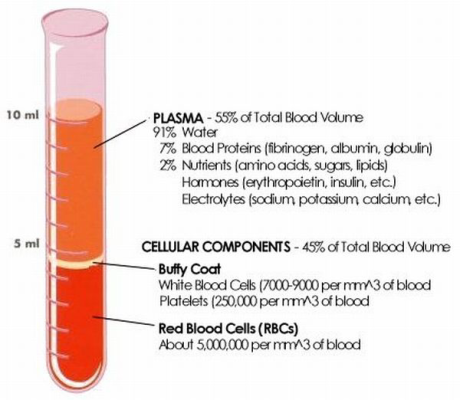In adults, stem cells are created in the bone marrow and then distributed to the rest of the body through the blood system. It stands to reason that stem cells might be harvested from either location, but there is an important difference both in quantity and in quality between the stem cells found at the source and those found on the periphery of the body.
Bone marrow creates the full range of stem cells – stromal stem cells, which can become bone, cartilage, and fat, as well as hematopoietic stem cells, which become parts of the blood such as platelets and red corpuscles. Stem cells from bone marrow can be used by any part of the body because they contain that full spectrum.
Stem cells derived from the patient’s peripheral blood, on the other hand, offer only a narrow spectrum that repair mostly soft tissues and have produced only “promising but inconsistent” results in clinical trials. In order for this PRP (platelet-rich plasma) treatment to be therapeutic, the stem cells in the patient’s blood must first be concentrated and then returned to the patient’s body.
Bone-marrow stem cells and PRP share the advantage of being autologous – they are the patient’s own stem cells – so there is no danger of cellular incompatibility. PRP treatment has another advantage in that it can be performed in any doctor’s office relatively inexpensively. Consequently, the biotech industry has been marketing PRP workstations to individual doctors as a lucrative in-office service.
For a PRP treatment, blood is extracted from the patient and then centrifuged to remove the red blood cells and other material, leaving the platelets at about five times their normal concentration. The patient’s platelets are then returned intravenously. The patient does not receive any more platelets than were taken out, but their concentration in the blood stream is somewhat higher than usual because the rest of the plasma has been removed. Hence the inconsistent results found in clinical trials.
On the other hand, when stem cells are harvested from bone marrow, the body is stimulated to replace what it lost such that it winds up producing more stem cells than before. Patients receiving additional bone marrow stem cells not only gets the freshest and most effective stem cells their bodies can create, they have the additional advantage of having greater numbers of stem cells circulating throughout their bodies in general.
These differences are very important to ProgenCell’s patients, who can count on receiving the most effective therapy available. For the sake of our patients, we will not take shortcuts. Throughout the twelve years of operation and across more than five hundred patients, ProgenCell is proud to say that there has not been even one complication.
In addition to the cutting-edge treatments available through stem cell therapy, Progencell also offers specialized services, such as stem cells for rheumatoid arthritis, stem cell therapy for Sjögren’s syndrome, stem cell therapy for lupus and more. This innovative therapy aims to provide long-term relief for individuals suffering from the debilitating effects of autoimmune diseases like rheumatoid arthritis, using the body’s own stem cells to promote healing and reduce inflammation. Whether you are seeking treatment for joint pain or other conditions, Progencell’s comprehensive approach ensures that you receive the highest standard of care with proven results.

